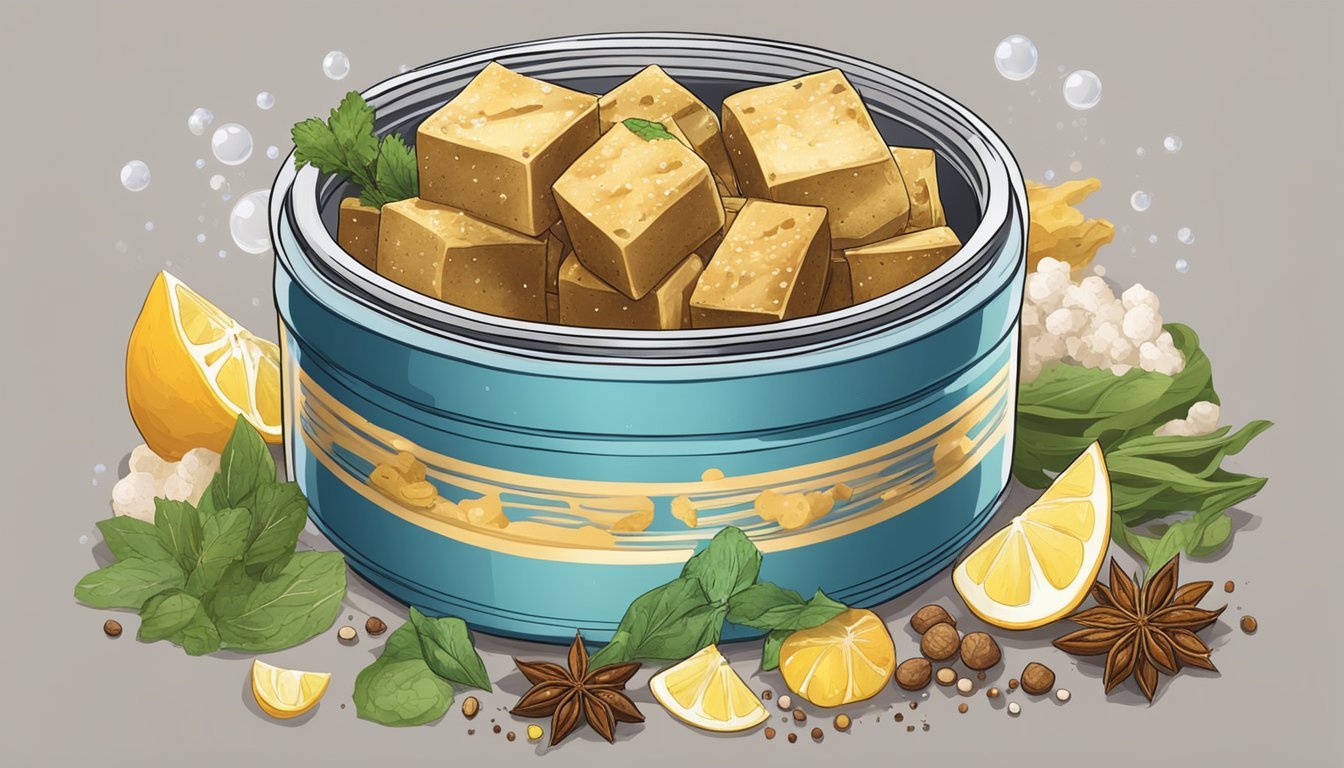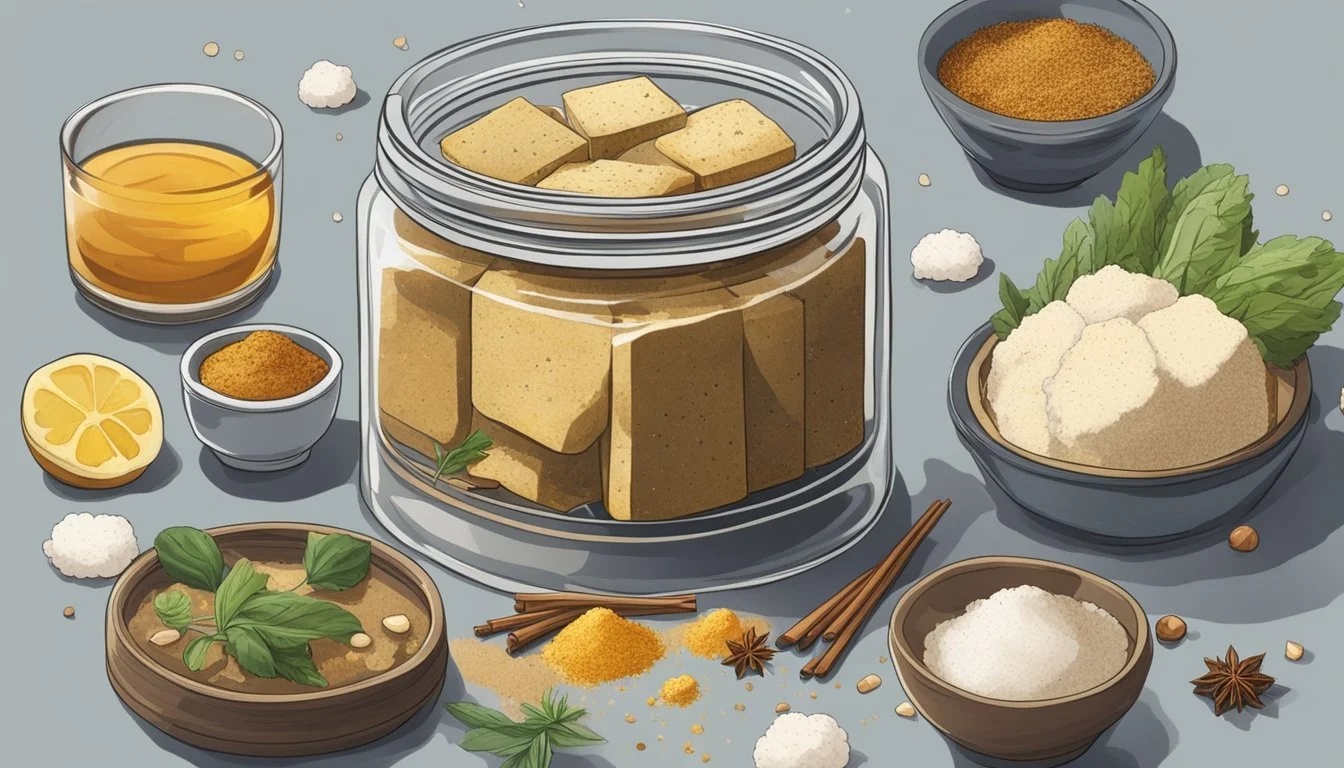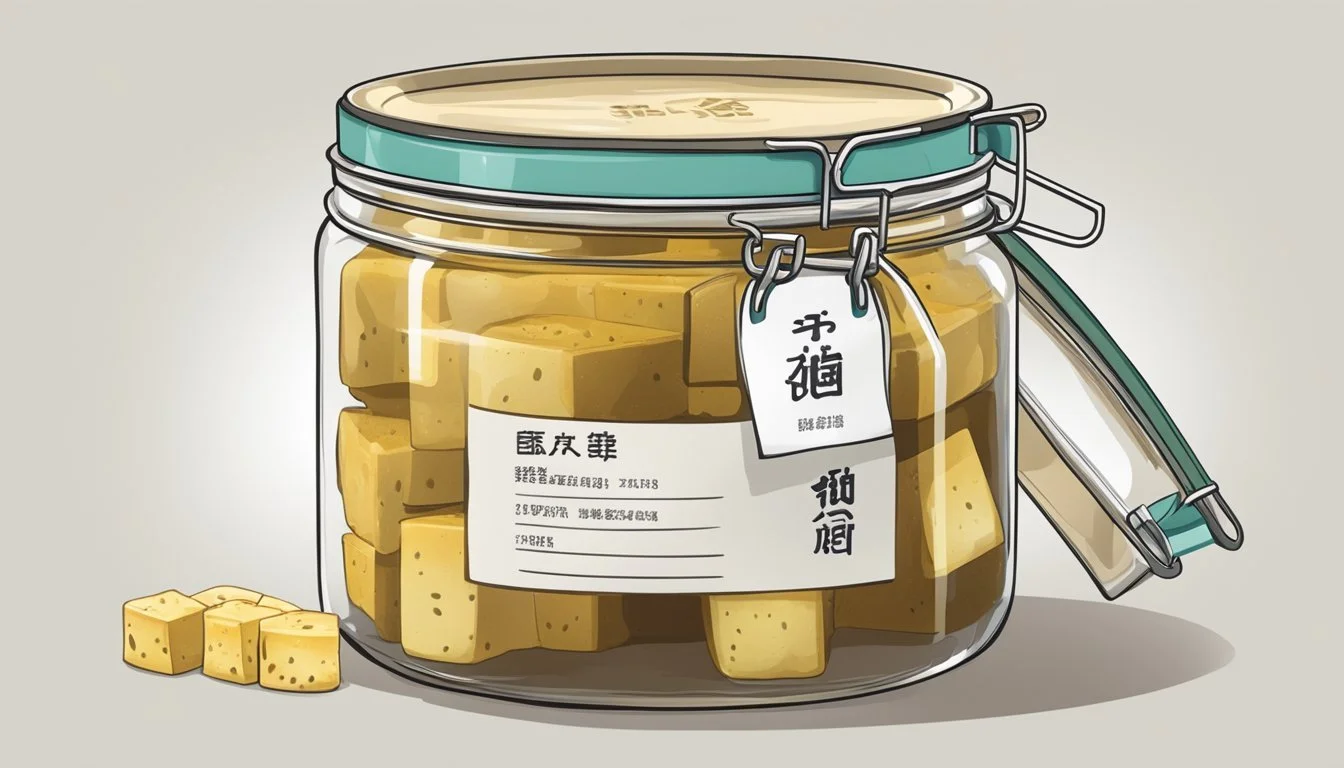How to Ferment Stinky Tofu
Mastering Chinese Fermented Tofu at Home
Stinky tofu, a traditional Chinese dish characterized by its pungent aroma, is a beloved staple in the culinary landscape of China. It derives its distinctive fragrance from a unique fermentation process that transforms simple tofu into a flavorful delicacy. The process of creating stinky tofu involves immersing fresh tofu in a specially prepared brine infused with various ingredients, which can include fermented soy or black beans, shrimp paste, rice wine, soy sauce, and a medley of spices. This fermentation stage is essential for developing the tofu's complex flavor profile and its signature odor, which has been compared to strong cheeses and earns the dish its memorable moniker.
Fermented tofu is not only appreciated for its taste but also celebrated for its versatility in Chinese cuisine. It can be found in numerous regional dishes, served either cooked or uncooked, and is often enjoyed as a condiment to complement a meal. The methods and ingredients used in the fermentation process can vary from region to region, allowing for a diverse range of flavors and textures within this category of Chinese fermented food.
Despite initial resistance from those unfamiliar with its potent scent, stinky tofu is widely regarded as a delicious addition to the gastronomy of China. Its fermentation method, closely guarded by artisans and street vendors alike, showcases the depth of Chinese culinary traditions and emphasizes an appreciation for the transformative powers of fermentation. While the dish may be an acquired taste, its popularity within China and among food enthusiasts around the world is a testament to its enduring appeal.
History and Cultural Significance
Stinky tofu, with its distinct aroma, is an enduring symbol of traditional Chinese culinary art. This section delves into the historical roots and the impact of stinky tofu in popular culture, offering insight into this unique Chinese dish.
Origins in Chinese Cuisine
Stinky tofu, or 臭豆腐 (chòu dòufu), has profound historical ties, believed to have first emerged during the Ming Dynasty. It is said that Zhu Yuanzhang, the dynasty's founder, was a patron of this aromatic specialty. Originating from Anhui Province in China, stinky tofu has since become a staple in Chinese cuisine. The traditional method of preparation involves fermenting tofu in a blend of milk and a vegetable, meat, or fish-based brine, sometimes for several months, which imparts the characteristic pungent odor.
Stinky Tofu in Popular Culture
Over time, stinky tofu has transcended its origins to become a cultural icon, reflecting the rich diversity of Chinese street food. It is typically found at night markets and roadside stands, capturing the essence of Chinese nightlife and cuisine. This snack is not only a test of culinary daring but an authentic experience of China's vibrant food scene. Despite the initial hesitancy due to its strong odor, once tried, it often gains avid fans for its unique taste and texture.
Understanding Fermentation
Fermentation is a biological process where microorganisms like bacteria, yeasts, or molds convert carbohydrates into alcohol or acids under anaerobic conditions, a method essential for creating stinky tofu.
The Science of Fermentation
Fermentation involves microorganisms, predominantly bacteria and yeasts, breaking down sugar and starch into simpler compounds. In the context of stinky tofu, the key process is the action of bacteria and yeasts on the tofu proteins, transforming them into a range of flavorful and aromatic compounds. It's a carefully managed process, as the fermentation environment must support desired microbes while inhibiting harmful ones.
Beneficial Bacteria and Probiotics
Key for successful fermentation are the beneficial bacteria, such as those in the Lactobacillus genus, which can often naturally be found on the raw ingredients or are sometimes added. These bacteria are also known as probiotics—microorganisms that provide health benefits when ingested. They contribute to the distinctive flavor of stinky tofu and may also offer digestive health benefits.
Examples of Probiotic Bacteria in Fermentation:
Lactobacillus
Bifidobacterium
Saccharomyces (often considered a beneficial yeast)
The Role of Salt in Preservation
Salt is a critical player in the preservation of foods through fermentation. In stinky tofu production, salt in the brine solution creates an environment in which harmful microbes struggle to survive, while promoting the growth of the desirable fermentation agents like Lactobacillus.
Functions of Salt in Fermentation:
Preservation: Creates a hostile environment for undesirable microorganisms.
Flavor: Contributes to the overall taste profile of the fermented product.
Texture: Helps maintain the structural integrity of the tofu during fermentation.
Ingredients and Equipment
In the process of fermenting stinky tofu, selecting the appropriate type of tofu and combining it with flavorful ingredients is crucial. Equally important is using the proper equipment to ensure successful fermentation.
Choosing the Right Type of Tofu
The foundation of good stinky tofu is firm tofu. It's essential to start with a high-quality firm tofu that can withstand the fermentation process without falling apart. This type of tofu absorbs flavors well and provides the needed texture.
Additional Ingredients for Flavor
Once you have the tofu, you'll need to prepare a brine. This typically includes water, salt, and various spices. Specific spices may include star anise or Sichuan peppercorns, based on regional preferences. Some recipes also recommend adding vegetables like sliced carrots or chili peppers to the brine for extra flavor. A mold is introduced to the brine, which helps develop the tofu's characteristic tang and aroma.
Required Fermenting Equipment
The necessary equipment for fermenting tofu includes a clean jar or suitable fermentation vessel. It should be large enough to submerge the tofu entirely in the brine. The container must seal well to create an anaerobic environment for the fermentation to take place properly. Additionally, utensils for handling the tofu and the ingredients should be sterilized to prevent contamination.
Preparing the Tofu for Fermentation
To produce authentic Stinky Tofu, meticulous preparation of the tofu prior to the fermentation process is crucial. This involves cutting the tofu to maximise surface area, soaking it to improve texture, creating a specialized brine solution and finally, inoculating with mold to initiate fermentation.
Cutting and Soaking
Cutting the Tofu: Begin by cutting the firm tofu into consistent, bite-sized cubes. This increases the surface area allowing the brine to penetrate effectively.
Cube size: 1-inch squares.
Consistency: Ensure each piece is uniform to ferment evenly.
Soaking the Tofu: Soak the tofu cubes in warm water. This helps to remove any impurities and prepares the texture for the upcoming fermentation.
Soak duration: At least 15 minutes.
Water temperature: Warm, approximately 40-45°C (104-113°F).
Creating the Brine Solution
One must prepare a brine solution that acts as the fermenting medium for the tofu cubes.
Brine composition:
1.5 cups of water
A generous amount of salt
Sugar (for taste adjustment)
Brine Preparation Steps:
Combine water, salt, and sugar in a saucepan.
Bring to a boil and allow boiling for 1 minute.
Let the solution cool completely before proceeding to the next step.
Rice Wine Inclusion: Once cooled, integrate a quantity of rice wine into the brine to enhance flavor and aid in fermentation.
Rice wine suggestion: Approximately 2 tablespoons.
Inoculating with Mold
Introducing the Mold: The final step is to introduce a mold culture to the tofu. This is what starts the fermentation process and gives the tofu its characteristic flavor and aroma.
Mold types: Typically, a rice wine yeast or a specialized mold culture.
Application: Evenly coat the tofu cubes in the mold to kickstart fermentation.
Best Practices for Mold Inoculation:
Ensure all tools and containers are sterile to prevent unwanted bacterial growth.
Distribute the mold evenly across all tofu pieces.
Submerging in Brine:
Transfer the mold-coated tofu cubes into the brine solution, ensuring that the pieces are completely submerged for uniform fermentation. Seal the container and store at an appropriate temperature to aid the development of the desired flavors.
Fermentation Process
In the creation of stinky tofu, careful control of the fermentation process is crucial to develop its characteristic flavor and aroma, while avoiding contamination.
Initial Fermentation Stage
The journey of tofu from bland to stinky begins in the initial fermentation stage. Fresh, firm tofu is submerged in a brine solution — a blend that often includes fermented soy or black beans, along with other ingredients to introduce the necessary bacteria and promote fermentation. It is essential that this takes place in a clean, sterilized jar to prevent unwanted microorganisms from spoiling the batch. The temperature at this stage plays a significant role, with a warmer ambient temperature typically accelerating the fermentation process, although not too warm to prevent the growth of harmful bacteria.
Monitoring the Fermentation
Throughout fermentation, vigilant monitoring is needed. Observing changes in smell, texture, and color indicates the activity level of the bacteria, molds, and yeasts at work. These microorganisms are the architects of stinky tofu’s pungent aroma and should flourish in the controlled environment of the jar. However, if signs of contamination such as discoloration not typical of the fermentation, off-putting smells different from the expected pungency, or the presence of visible mold not consistent with normal fermentation occur, the batch should be discarded.
Storage and Maturation
After the initial fermentation, the tofu must be stored properly to mature. This involves sealing the tofu with a layer of sesame oil in the jar — an anaerobic environment that lets the flavor develop complexity. The sealed jar is then placed in the refrigerator. The cooler temperature of the fridge slows down the fermentation, allowing the tofu to age gradually and prevents over-fermentation which could lead to spoilage. The refrigeration stage can last from several days to weeks; during this time, the tofu’s characteristic fragrance and taste reach their peak, making the product ready for consumption.
Serving and Culinary Uses
Stinky tofu, celebrated for its pungent aroma and unique taste, has a rich culinary heritage. When it comes to serving and enhancing the flavor of this traditional delicacy, there are established methods and a variety of modern interpretations.
Traditional Serving Methods
In its traditional form, stinky tofu is commonly deep-fried until it achieves a crisp exterior while maintaining a soft interior. Markets and street vendors typically serve it on skewers or in a paper container, often accompanied by a side of pickled cabbage. It is frequently paired with a spicy dipping sauce, which may contain ingredients like soy sauce and chili. The contrast between the neutral taste of tofu and the strong flavors of the sauce delights many.
Another conventional method is to serve stinky tofu steamed, highlighting its softer texture. The steamed version is usually presented with a drizzle of sesame oil and soy sauce to enrich its flavor profile.
Modern Twists on Stinky Tofu
Chefs and food enthusiasts have put creative spins on stinky tofu, adapting it to a wider audience. Some chefs incorporate it into Chinese red cooking, which uses a savory red fermented tofu in the preparation to add depth and complexity to the dish. Additionally, modern fusion restaurants may serve stinky tofu in sandwiches or as a burger patty, providing an unconventional twist to the western palette.
Pairings and Condiments
Stinky tofu's versatility allows it to pair seamlessly with a variety of dishes. It holds its own next to steamed buns or congee for a filling meal. In noodle dishes, it offers a fermented counterpoint to the simplicity of the noodles. Not only do contrasting tastes harmonize, but so do the textures.
For condiments, a staple is a blend of dipping sauce made with soy sauce, chili, and occasionally a small amount of sugar to balance the spiciness. The sauce can be adjusted to taste, with garlic or scallions added for an extra zing. It is customary to serve stinky tofu with pickles, as they offer a crunchy and acidic element that complements the creamy, intense nature of the tofu.
Nutritional Information
Stinky tofu, a fermented soy product, is lauded for its unique nutritional profile, featuring essential proteins, vitamins, and minerals. This section examines its protein and amino acid content, vitamin and mineral profile, and the general health benefits associated with fermented foods. (What wine goes well with fermented foods?)
Protein and Amino Acid Content
Stinky tofu provides a substantial amount of protein, which is crucial for muscle repair and growth. It contains all nine essential amino acids, making it a complete protein source. This is particularly beneficial for those following a vegan diet, as it can serve as an alternative to animal proteins.
Vitamin and Mineral Profile
Stinky tofu is rich in a range of vitamins and minerals. It is an excellent source of calcium, necessary for strong bones and teeth. The product also provides significant levels of magnesium and phosphorus, which are vital for various bodily functions. Moreover, it contains iron and zinc, essential for immune function and metabolism. Lastly, stinky tofu contains B vitamins, important for energy production, and manganese, which supports bone health and aids in the metabolism of amino acids, cholesterol, and carbohydrates.
Health Benefits of Fermented Foods
Fermented foods like stinky tofu are known to possess health benefits due to the presence of antioxidants and beneficial bacteria. These elements contribute to improved gut health, enhanced digestion, and may boost the immune system. Additionally, the fermentation process can increase the availability of nutrients and support the body's ability to absorb them, enhancing overall nutrition.
Safety and Storage
When fermenting stinky tofu, ensuring safety and prolonging storage life are critical. Addressing potential contamination, providing optimal conditions, and understanding shelf life are all necessary steps to maintain the quality of fermented tofu.
Preventing Contamination
To prevent contamination, sterile equipment and environments are a must. During fermentation, one should use utensils and containers that have been thoroughly cleaned and sanitized. It’s also crucial to maintain a clean workspace to avoid the introduction of harmful bacteria that could compromise the fermentation process.
Utensils: Clean with hot, soapy water and sanitize.
Containers: Sterilize jars or fermentation vessels before use.
Environment: Keep the fermentation area free from contaminants.
Optimal Storage Conditions
Post-fermentation, stinky tofu should be stored in a refrigerator to preserve its quality and extend its shelf life. The ideal temperature range for storage is between 35-38°F (2-3°C). It should be kept in a sealed container to protect it from absorbing other flavors from the fridge and to prevent it from imparting its odor to other foods.
Temperature: 35-38°F (2-3°C)
Container: Sealed to protect and isolate
Refrigerator Placement: Store away from foods that can absorb odors
Shelf Life Considerations
Once in a sealed container inside the fridge, fermented tofu can remain preserved for several weeks to months. However, practice vigilance for any signs of spoilage, such as a change in color, texture, or an off smell. If the tofu seems to have spoiled, it must be discarded to avoid health risks.
Preserved Duration: Several weeks to months
Spoilage Signs: Color change, altered texture, off smell
Discarding: If in doubt, do not consume; discard immediately
Creative Recipes and Variations
Fermented stinky tofu is renowned for its pungent aroma and unique taste, which allows it to be adapted into various dishes. These creative recipes and variations showcase its versatility in both traditional and innovative culinary styles.
Stinky Tofu Hot Pot
A Stinky Tofu Hot Pot is a warming dish perfect for cooler weather. The foundational recipe involves a rich, simmering broth seasoned with aromatics and spices such as star anise and sichuan peppercorns for a spicy undertone. Thinly sliced pork and tender bamboo shoots complement cubes of fermented tofu, melding all the flavors together in a harmonious hot pot that is both savory and satisfying.
Vegetarian and Vegan Options
For a Vegetarian version, one could substitute pork with mushrooms or eggplant to maintain the umami flavor profile. Vegan cooks often use vegetable stock as the base of the hot pot and incorporate a variety of plant-based proteins. Marination of the tofu with seaweed or fermented bean paste before adding it to the dish adds depth and seasoning — a synergy of tastes that does not rely on any animal products.
Fusion Cuisine Inspirations
Incorporating stinky tofu into Fusion Cuisine can lead to inventive dishes blending Eastern and Western culinary traditions. A daring chef might introduce fermented tofu to a classic Italian pasta, adding it to a vibrant tomato-based sauce with garlic, basil, and chili for a bold entwining of flavors. This kind of culinary creativity opens up a world of possibilities, pulling stinky tofu out of its traditional context and into new, exciting gastronomic territories.
Conclusion
Making stinky tofu at home requires patience and precision, but the result is a testament to culinary exploration. This distinctive Chinese delicacy is not only a deep dive into one of the world’s most unique fermented products, but also an opportunity to appreciate the richness of another culture.
Stinky tofu is rich in umami flavor, and despite its pungent aroma, it is a nutritious addition to the diet. It provides essential minerals like calcium and magnesium, and vitamins that are beneficial for health. The traditional methods of fermentation contribute to its complex taste profile.
As a versatile food, stinky tofu can be enjoyed in various ways—fried, stewed, or paired with spicy sauces. For avid food lovers, creating stinky tofu at home is more than just preparing food; it is an act of cultural appreciation, connecting with an age-old practice that has delighted taste buds through generations.
Chefs and food enthusiasts can take pride in successfully fermenting this intriguing dish. By embracing the methods shared in this article, anyone can add this nutritious and flavorful specialty to their culinary repertoire.









